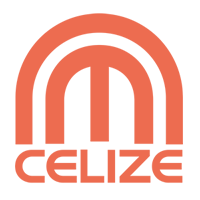Meeting with street artist Max132
We were interested in the joint work of street artists who created a monumental mural covering the Rougier & Plé store. This mural brings new life to this facade while awaiting its complete renovation.
At Celize, we are passionate about street art and various means of expression in urban spaces.
Meeting Max132, a street artist from LATEULIER, in charge of creating a mural for Rougier & Plé
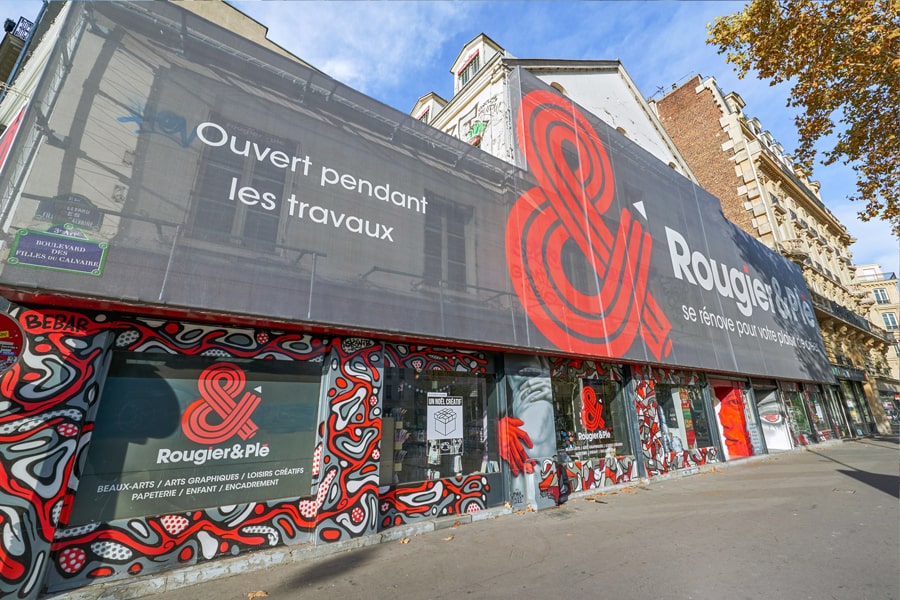
Can you tell us about your background, Max132? How did you come to express yourself on the streets?
I come from Champigny, a city in the 94 department. I have always been passionate about drawing in all its forms since I was little. In the 90s, I discovered graffiti, especially murals by Mode2 (a graffiti artist). Since it was part of hip-hop culture, I was immediately interested. I immediately envisioned drawing large-scale murals on walls. I then started learning to use spray paint, doing tags, graffiti, legal and illegal… In parallel, I studied graphic design. Later, I combined my two passions. With schoolmates, we formed several groups. We practiced on walls together. Today, we are united within the 132 collective.
Why did you choose the street and large format?
What is pleasant about large format is the freedom to express oneself beyond a sheet of paper and to expose oneself to a larger audience. With tags and graffiti, the basic principle is to mark your name to gain maximum visibility. It’s like advertising posters on the street. They sell products, and we display our name and that of our team. It’s the same marketing principle. Advertising blitz (laughs).
How would you define your style and way of working?
My style is figurative. I am passionate about drawing. I am quite a fan of comics, cartoons, etc. I am less into lettering. Given my graphic skills and painting know-how, I directly leaned towards decoration. Initially, clients mainly wanted what I would call “classic” creations: landscapes, portraits… I painted indoors and outdoors, sometimes for events. In the beginning, I started by painting on iron curtains. I approached stores for work.
Due to my training as a graphic designer, I learned to meet clients’ needs. Some graffiti artists prefer to stay true to the graffiti spirit and may struggle with constraints. For my part, I have diversified a lot. I did many different things: graphic creations and more realistic ones… While developing my technique, my way of using the spray paint. My universe is quite vast. In my personal projects, as opposed to commissioned work, my creative universe is darker…
For the design of the mural on the Rougier & Plé store, how did the project go?
For the project, we went through my association, LATEULIER. It’s an association that manages projects requiring the intervention of several artists. Each artist has their status, either self-employed or registered with the Maison des Artistes. One single entity. This prevents an individual artist from bearing the entire project on their shoulders.
How was the team formed?
I formed the project team. The artists were selected based on the project’s specificities and the constraints related to the medium. In the case of Rougier & Plé, we weren’t dealing with the usual “graffiti” scenario where we work on entire walls. Here, we had to work on window frames. Since it wasn’t very large, I chose artists capable of creating a visual that is decorative and adaptable to a limited space.
Given the small space, we couldn’t tag large compositions. It would have been too crowded, leaving no room for the window display, unlike with classic graffiti artists. I therefore chose graffiti artists who could meet this spatial constraint. I also chose artists I know well and have already painted with.
Did you allocate a zone per artist?
No, we discussed it together directly on site.
What guided your artistic reflection on a collective and individual level?
I called on them precisely because I know each one perfectly masters their style. They do it spontaneously. We work based on trust. Since I know their work and their mastery of their graphic style well.
Can you introduce us to the works of the different artists?
Each artist has a distinct, easily identifiable graphic style. The only constraint imposed was the color code. Thus, even though each has a different style, it gives unity to the mural. But each could use the colors as they wanted.
At the far left of the facade, you have Bebar.
Bebar has his recognizable style, notably with his cartoonish characters reminiscent of Picasso’s deconstructed dimension or Miró’s vivid colors. It’s a rather rounded style.
(We continue reading from left to right of the main facade)
Next, there’s the entwined bust I created. I took a detail from a sculpture, “The Rape of Proserpine,” to highlight the figurative dimension.
Soklak is a versatile artist and rapper as well. He masters several styles. For this piece, he opted for a cubist style.
Moyoshi also has a well-identified graphic style: clear lines, bold colors, graphic cutouts. Sometimes, his work resembles African patterns, wax fabrics. He mixes colors with line work. He also works on EDF blocks, creating eyes composed of lines and colors.
Neasso worked on the shutters at the entrance.
The iron curtain is a full space. It’s a surface where it was possible to do more “classic” graffiti. We decided to put the crew’s name (our collective). A crew (team in English) is a group of graffiti/tag artists. There are many graffiti artists in the crew. In this project, there were six of us participating (but not all from the same crew).
I worked on the return of the facade with Amir Roti.
Amir Roti is an accomplished artist, graffiti artist but also a sculptor and tattoo artist. We decided together on the visual. Since it was for the creative arts store Rougier & Plé, it needed to bring an artistic dimension. We decided to go for sculpture visuals. Amir laid down the colors, the background, red and orange. I sketched the outlines and construction lines. Then Amir painted the background colors, red and orange, with effects. I then worked on top to give volume to the characters, “The Three Graces” by Canova, while he worked on the abstract forms in the background.
On the last part of the facade on Rue Commines side, Amir drew in his style oscillating between figurative and abstract, mixing solid and vaporous forms. This drawing style is unique to him.
Was there research work for the sculpture?
Yes, but just between Amir and me. The store manager, Stéphane Hecquel, fully trusted us. I managed the project with a free hand.
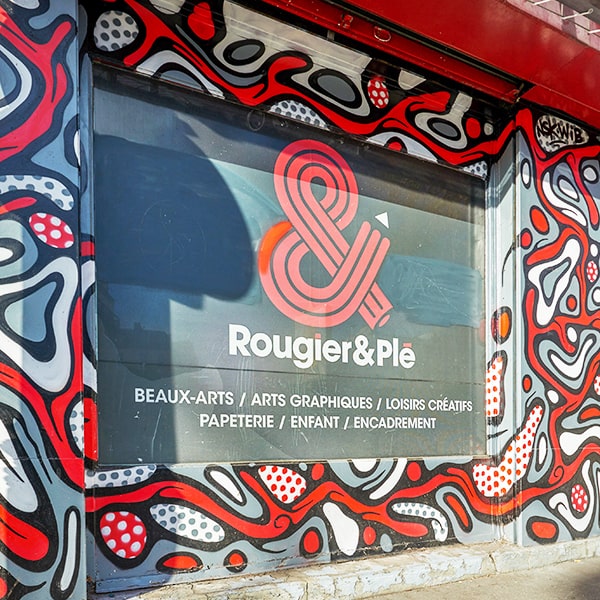
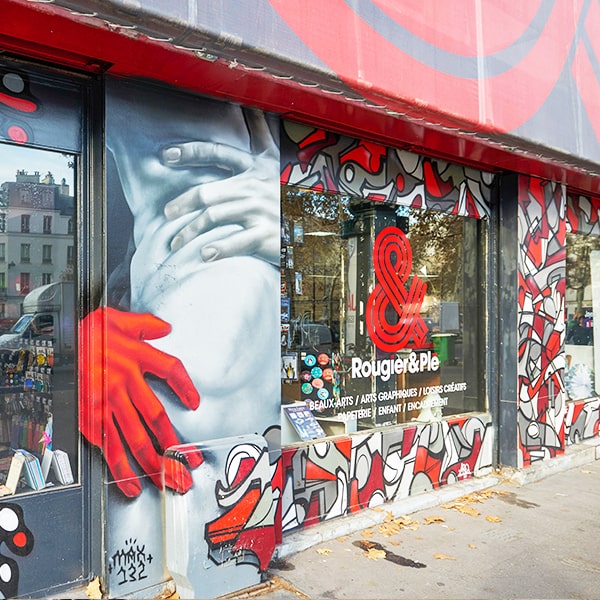
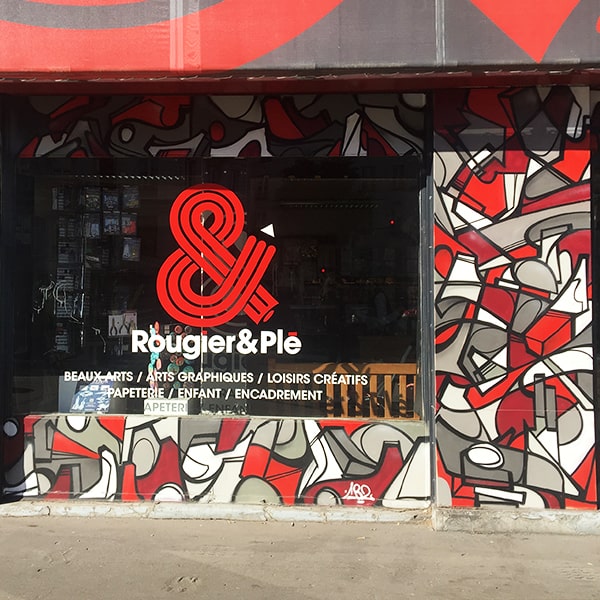
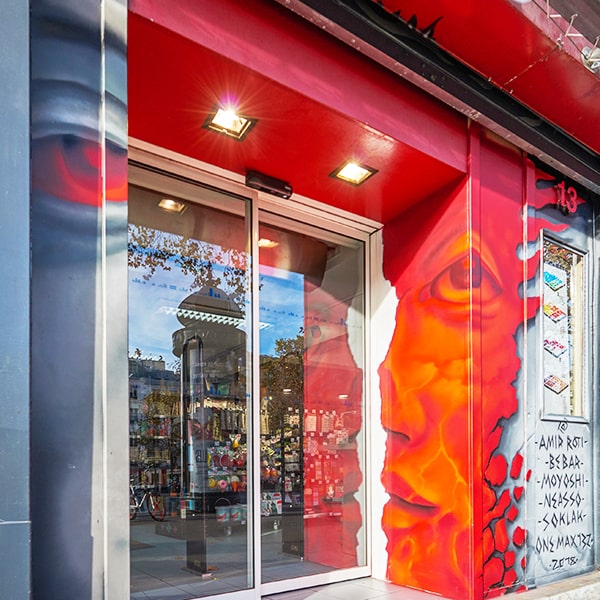
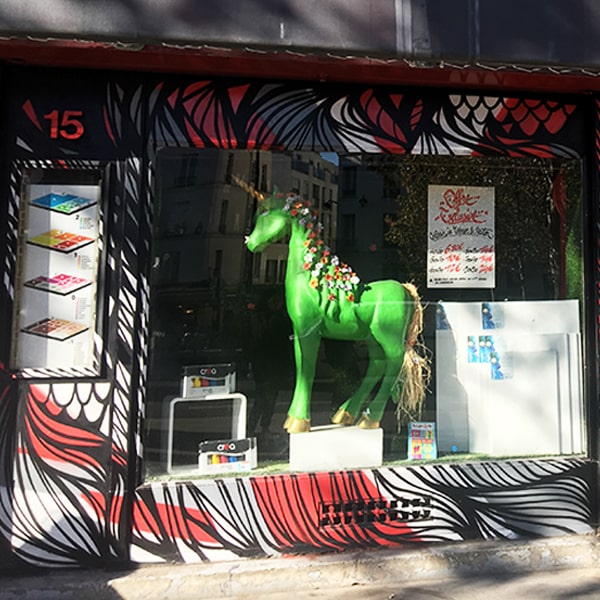
About
LATEULIER is a creative space specializing in visual arts and mural art known as “Street Art.” The association comprises an experienced team of graffiti artists, illustrators, graphic designers, and art directors.
